Any plastic products to order. Manufacturing with liquid plastics. Silicone molds for confectioner and soap making
Our company has a modern fleet of injection molding machines (thermoplastic - automatic) with a locking force of 90 to 320 tons and an injection volume of 230 to 920 grams.
Plastic injection molding is the best way to mass produce products:
Injection molding is a process in which plastic is changed from solid to liquid at high temperature and injected into a mold.
This method is used in various industries using modern materials with special properties, for example, when it is necessary to obtain particularly durable plastic products resistant to high temperatures and aggressive environments.
Production of plastic products to order
We provide plastic injection molding services from the simplest to the most complex. As a customer-oriented company, we carry out plastic injection molding even for small orders of several hundred pieces. Continuous 3-shift production, established relationships with suppliers of raw materials, constant quality control, allows you to quickly and efficiently carry out mass production of polymer products.
Our advantages
- We use plastic injection molding machines with different specifications;
- We make molds for casting products;
- Competitive prices for casting products;
- Efficient and modernizable casting cycle;
- We produce casting products on a turnkey basis, we take care of all stages of the process, depending on the wishes of the client;
- Plastic injection molding workshop operates 24 hours a day, 7 days a week, which reduces production time;
The process of molding plastic products
Plastic injection is the process of forming plastic products using a rigid mold, or. The polymer casting method allows you to create objects of any shape and size with tremendous design flexibility, both simple and very complex in design. This is a very common production method. In particular, car parts, 3D models, containers, POS materials and other products are produced by plastic injection molding.
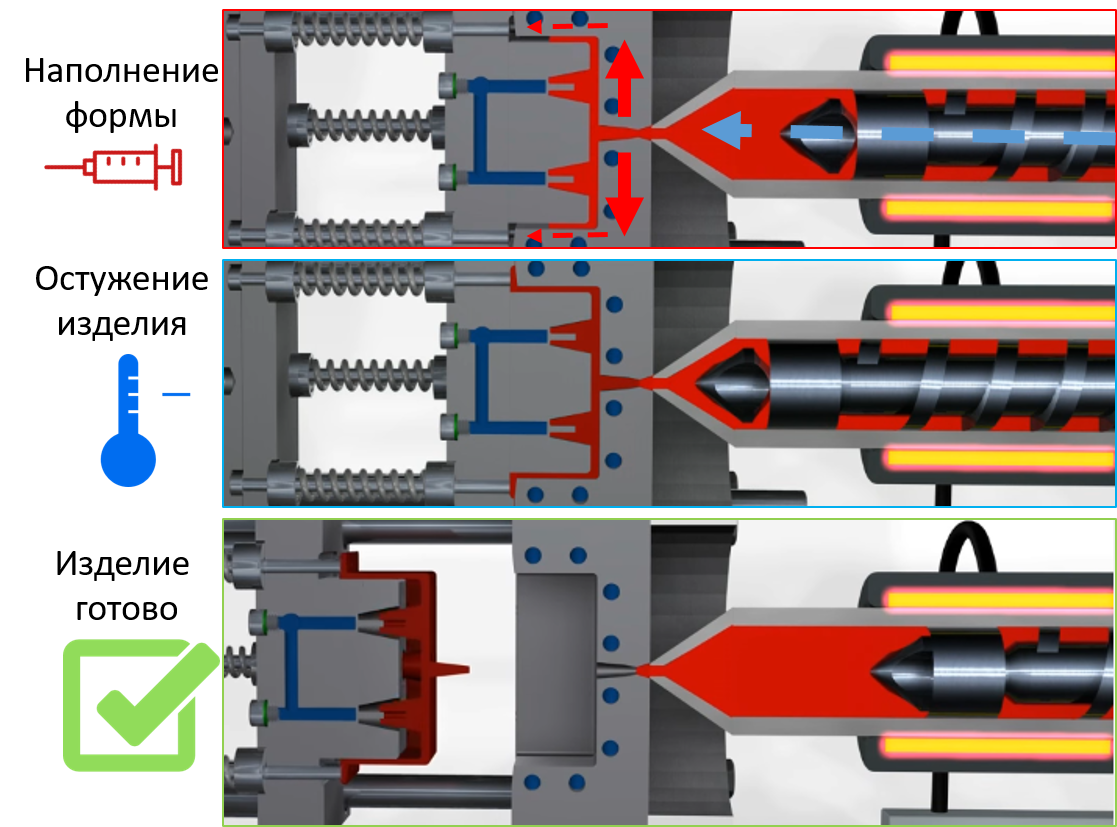
| Products for the construction industry | Products for the engineering industry | Plumbing products and more |
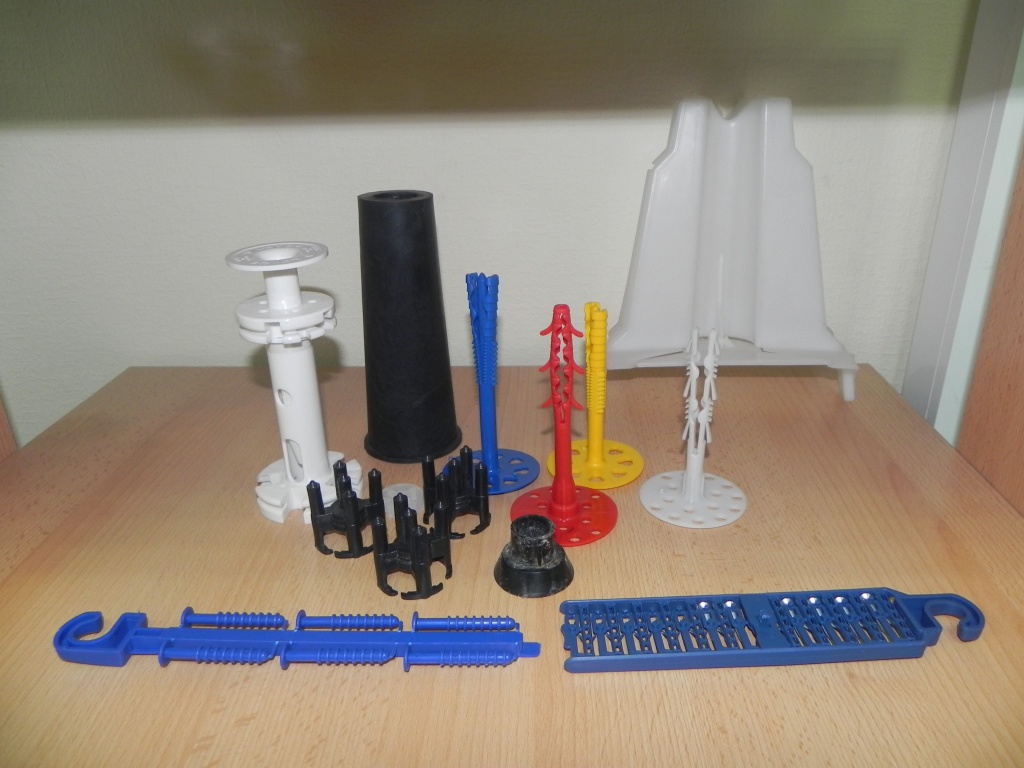 |
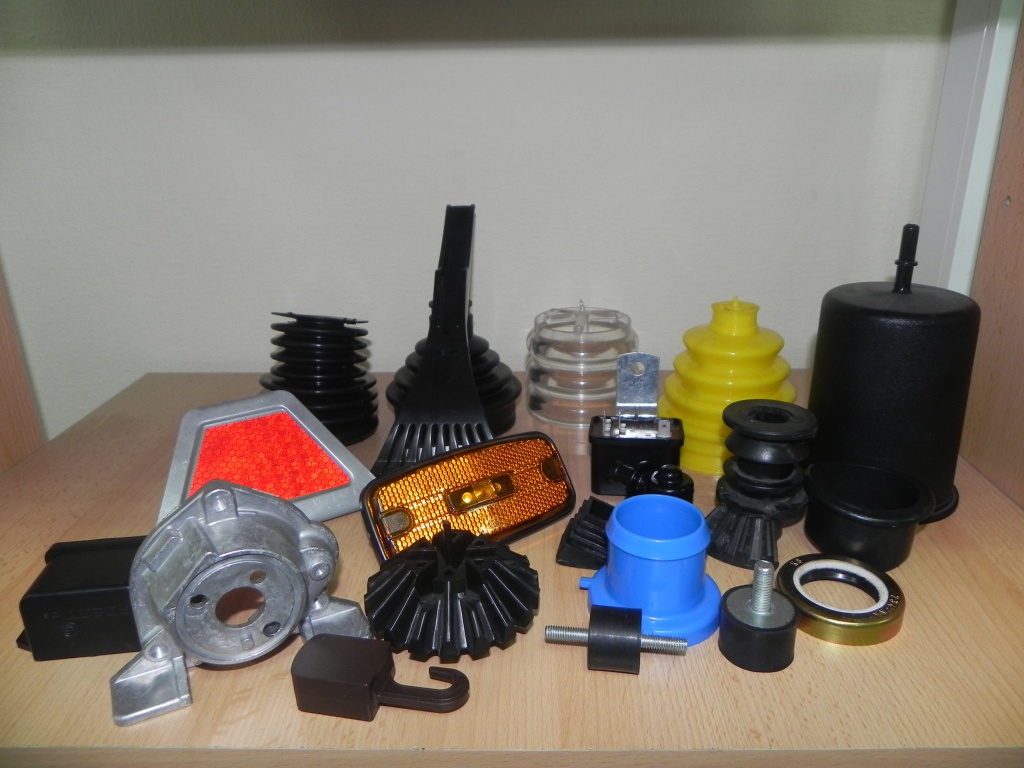 |
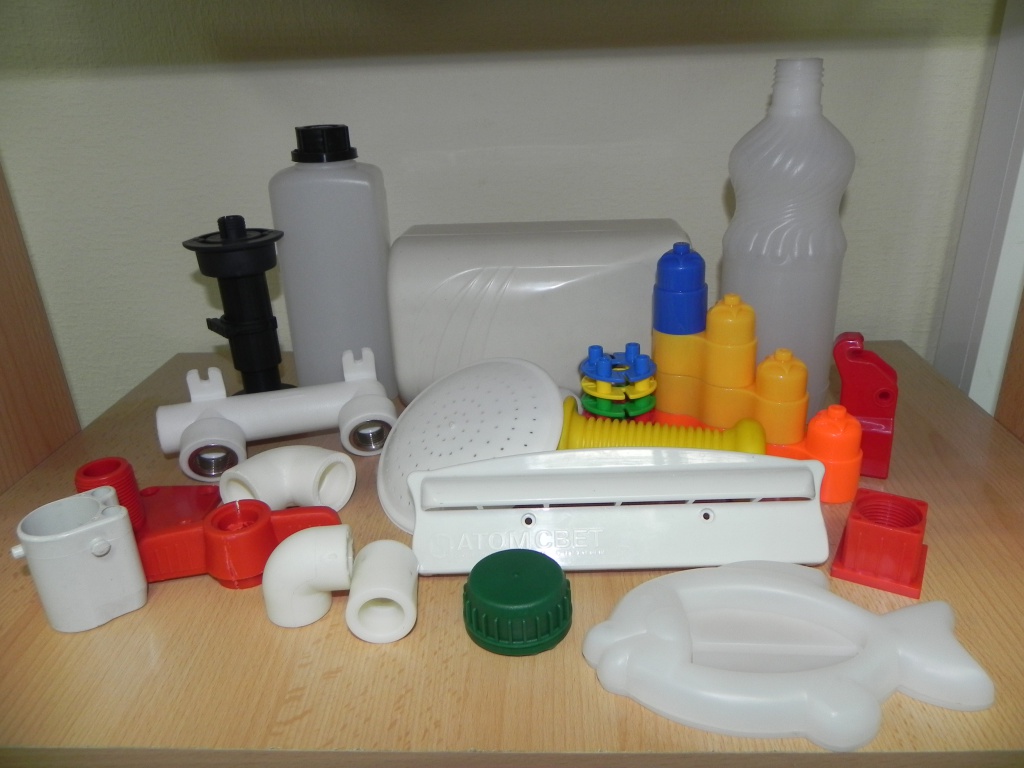 |
| household products | Various products for electrical engineering | |
 |
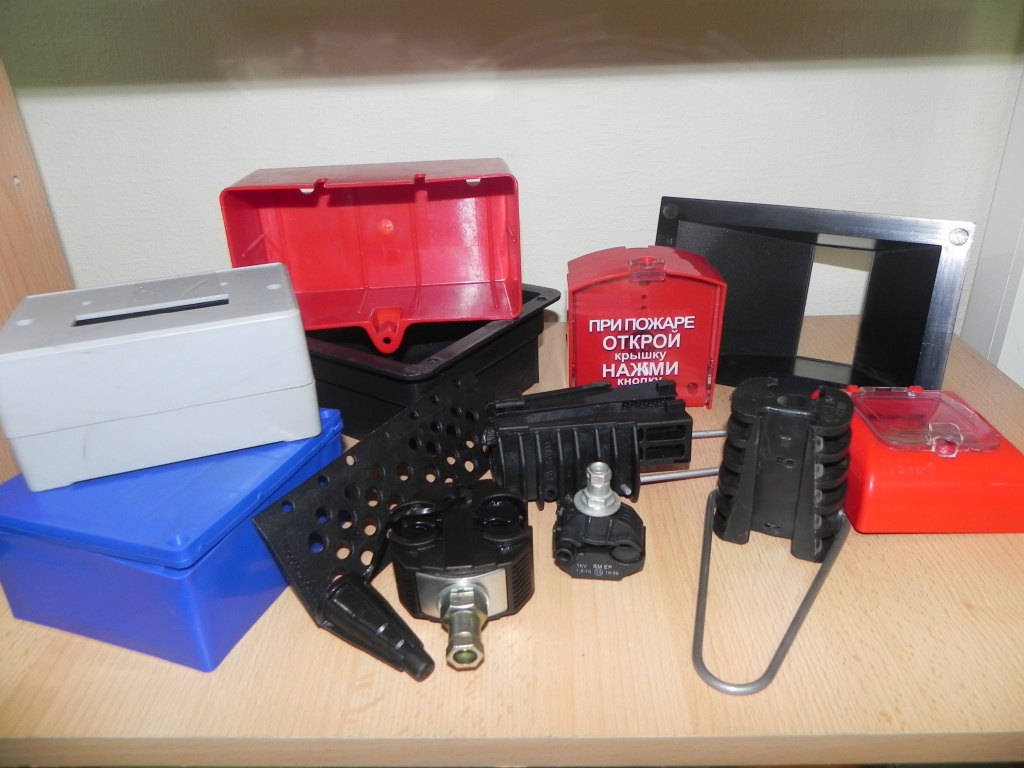 |
The principle of pricing
- Material - We carry out molding of plastic products from polycarbonate, polystyrene, polypropylene, polyamide and other types.
- The complexity of the development is due to the laboriousness of the process of creating molds for casting ordered products
- Output volume - the minimum amount depends on the payback of the creation process itself
Good day.
1. Attention! Reading the title! It has the word "technology" in it. Therefore, I will try, if possible, to describe in detail exactly it, the technology, using an example, so that it would be clearer. The purpose of the article is to show the technology so that everyone can repeat if necessary.
2. It is not necessary to write what could be printed or milled on a 3D printer.
3. Each technology has its own advantages and disadvantages.
Everyone is free to choose how to achieve their goal.
So. Initial problem: when buying a car, a cradle was installed in it for cell phones, of course there was no adapter, buying an adapter is very expensive.
I decided to install an ordinary phone holder in this place.
I would like to:
1. That there would be a place for charging in it.
2. Turn towards the driver, like the original cradle.
3. Whatever looks like a collective farm.
I found a phone holder, but if you just screw it to the panel, there will be neither turning nor charging, so I decided to use a technology that has long been developed by dental technicians, namely: the manufacture of products from acrylic plastic by pressing on investment models.
I describe as detailed as possible, if I missed something, ask.
1. I removed the cradle from the car and unscrewed the base - on it I made an "imitation of the car" from gypsum.
2. In lightly hot water warmed up the wax plate and crimped it on the base. Cut to the right size.
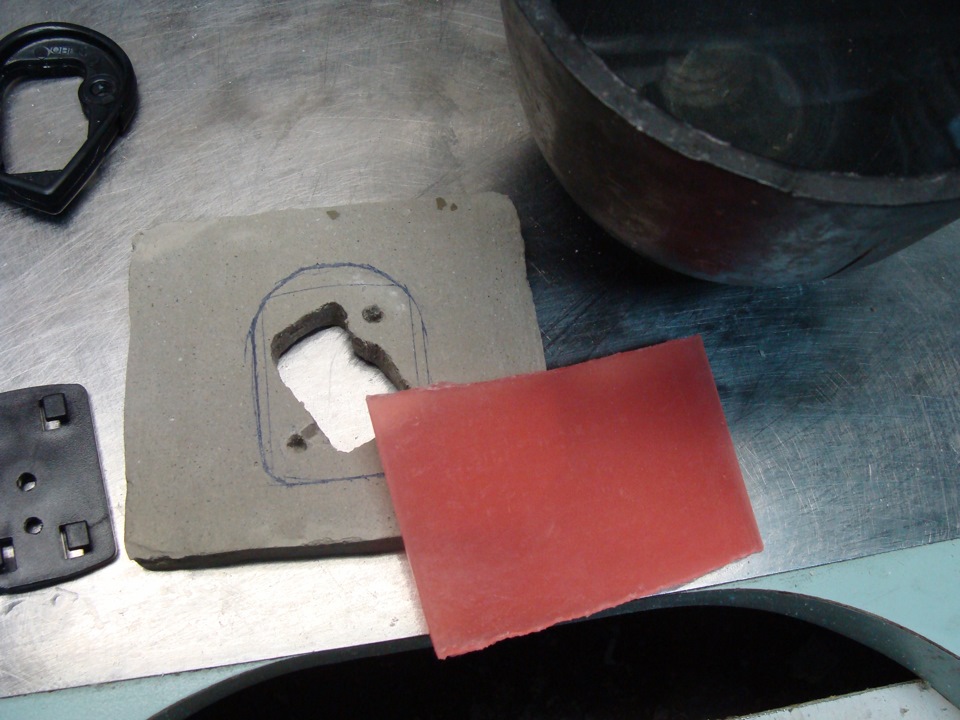
3. I modeled the part I needed from wax.
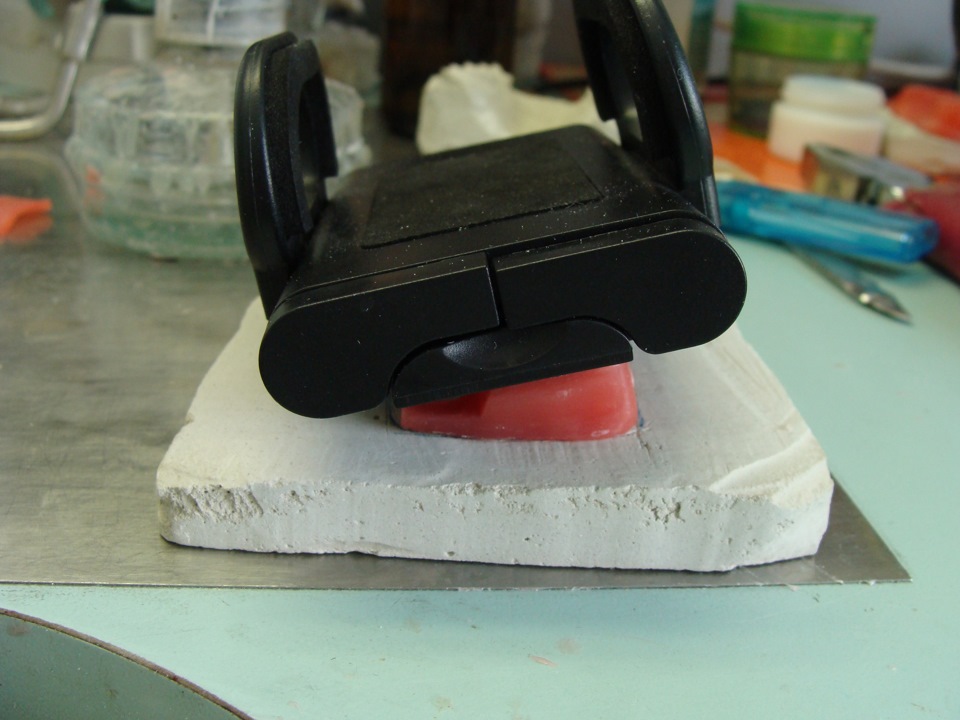
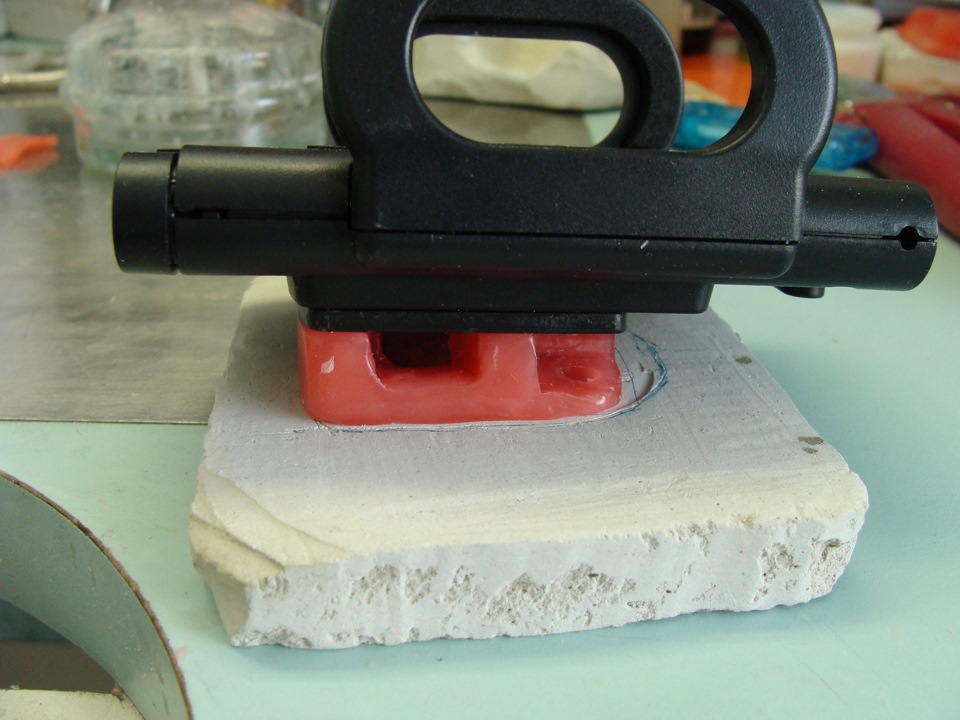
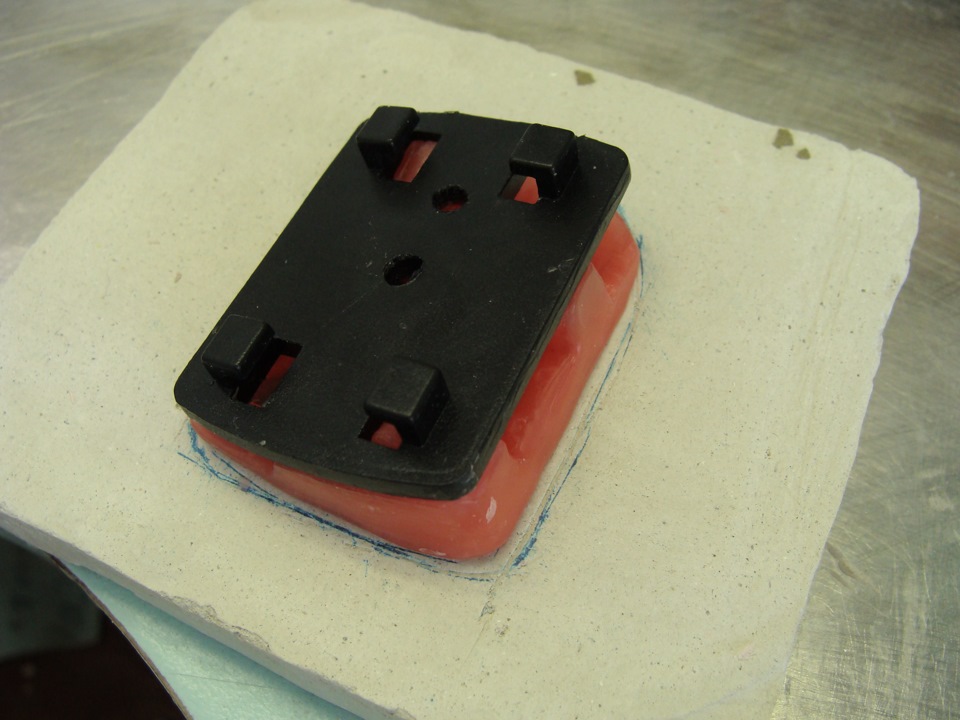
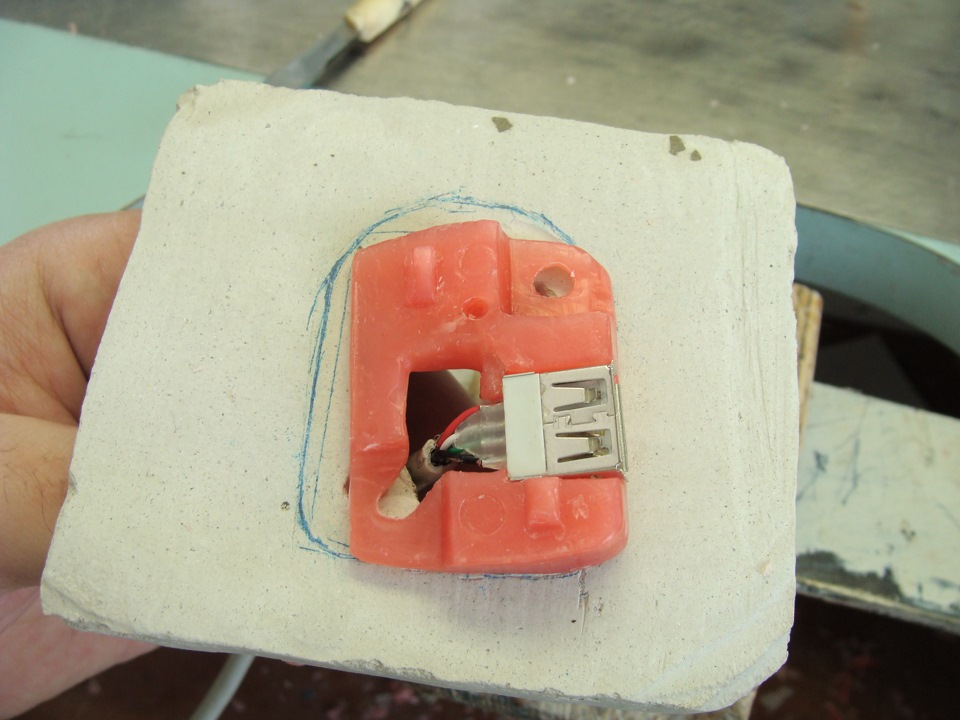
4. I took an average dental cuvette, filled it with plaster and drowned my wax model to the middle.
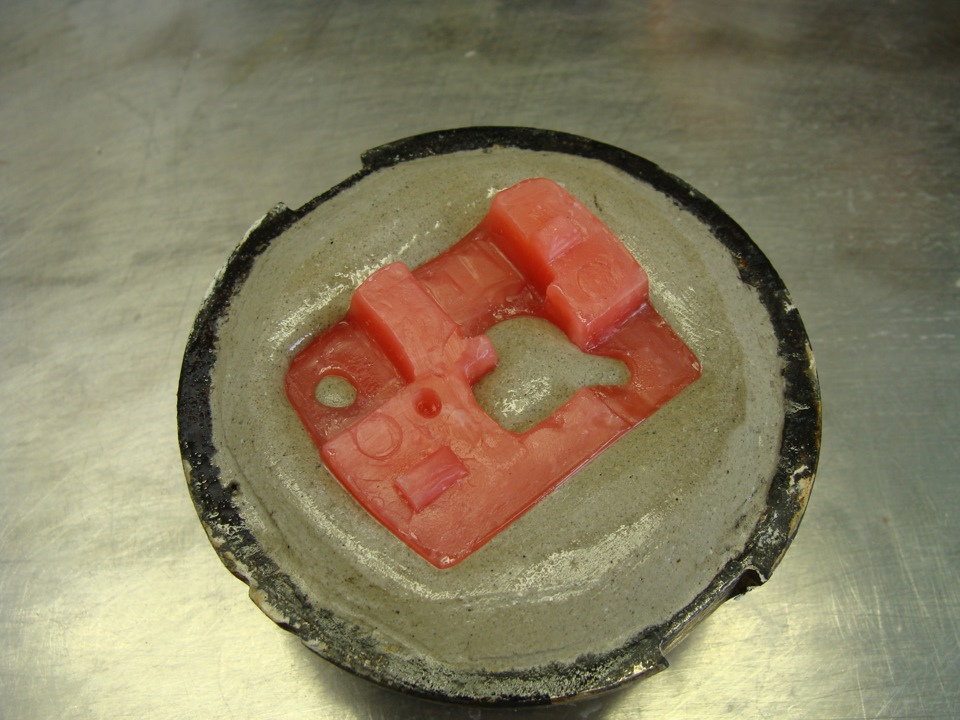
It is desirable that the joint pass through flat surfaces to make it easier to process later.
It is necessary that the surface of the gypsum be on a level with the cuvette, even.
Well, make sure that there is no air from below or in the undercuts. If there are undercuts, then you must first fill them with plaster, and only then melt the wax model.
5. After the gypsum has set, we immerse half of the cuvette in cold water for 10 minutes to soak the plaster with water.
This is necessary so that the gypsum halves do not stick together, they can be easily separated.
The insulation will be better. if the saturation of gypsum with water is done in a soapy solution.
He closed the cuvette with the second half and filled it with plaster.
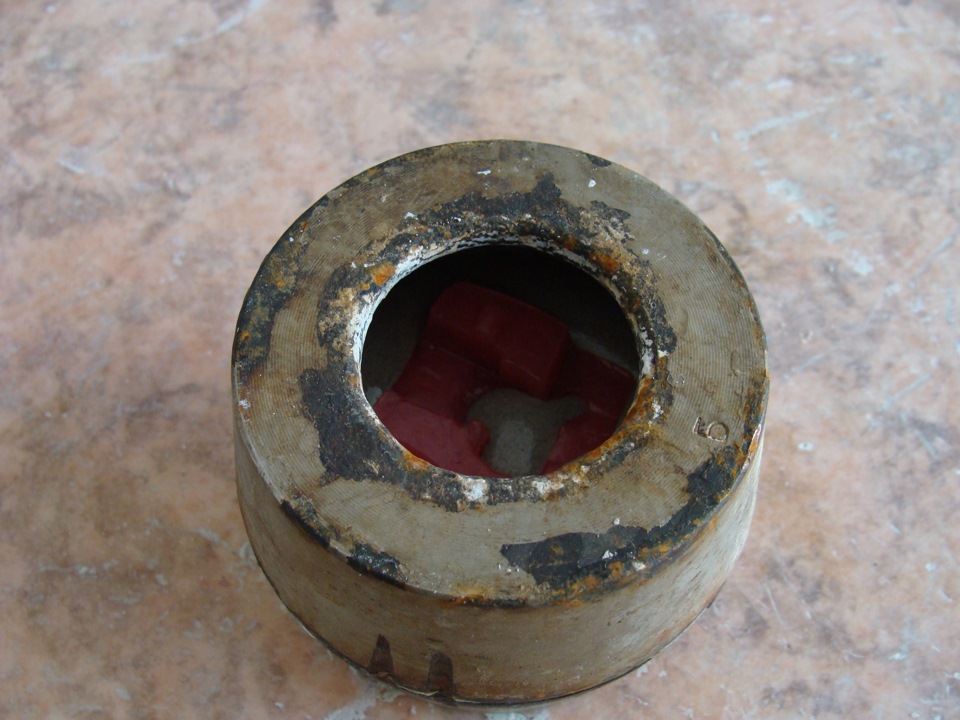
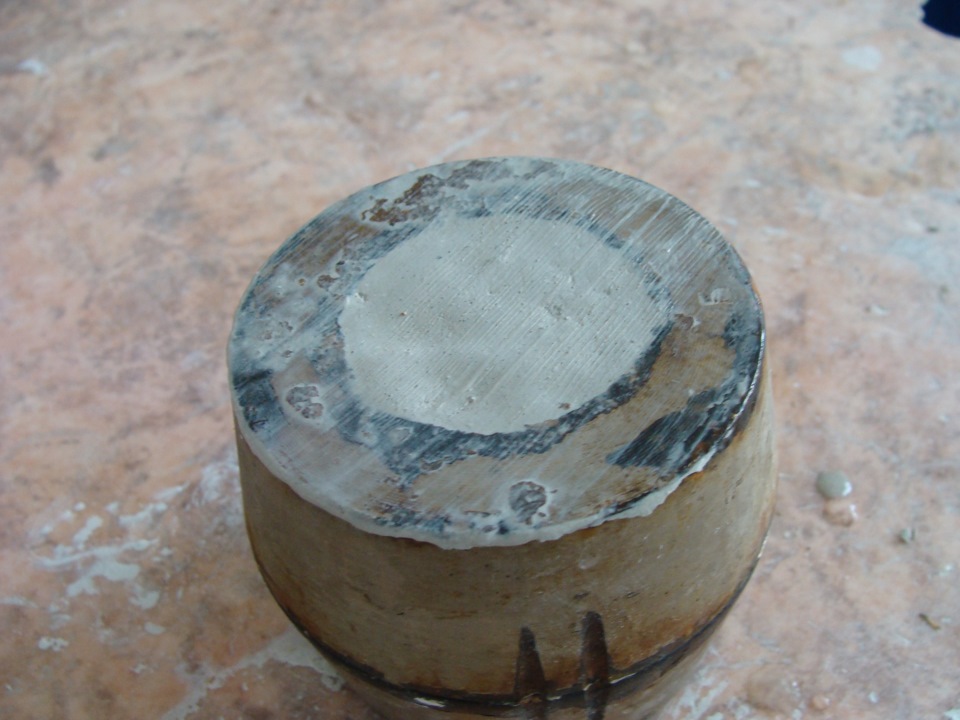
The setting speed of gypsum can be increased by adding table salt to the mixing water.
When filling with gypsum, the cuvette must be tapped and shaken so that the gypsum fills the entire volume and there are no air pores.
6. After the gypsum has set, place the cuvette in boiling water for 10 minutes.
If you keep it in boiling water for longer, the wax will begin to impregnate the gypsum and the isolac will be worse on the gypsum. Well, some lumps will remain from the wax - they can be stung with a soft brush while the plaster is hot.
With pincers he took out a cuvette, opened it, washed the wax with boiling water.
Received a plaster mold.
At this point, you can still gypsum where you need to slightly undermine.
If the plaster parts have broken off, you can glue it with superglue.
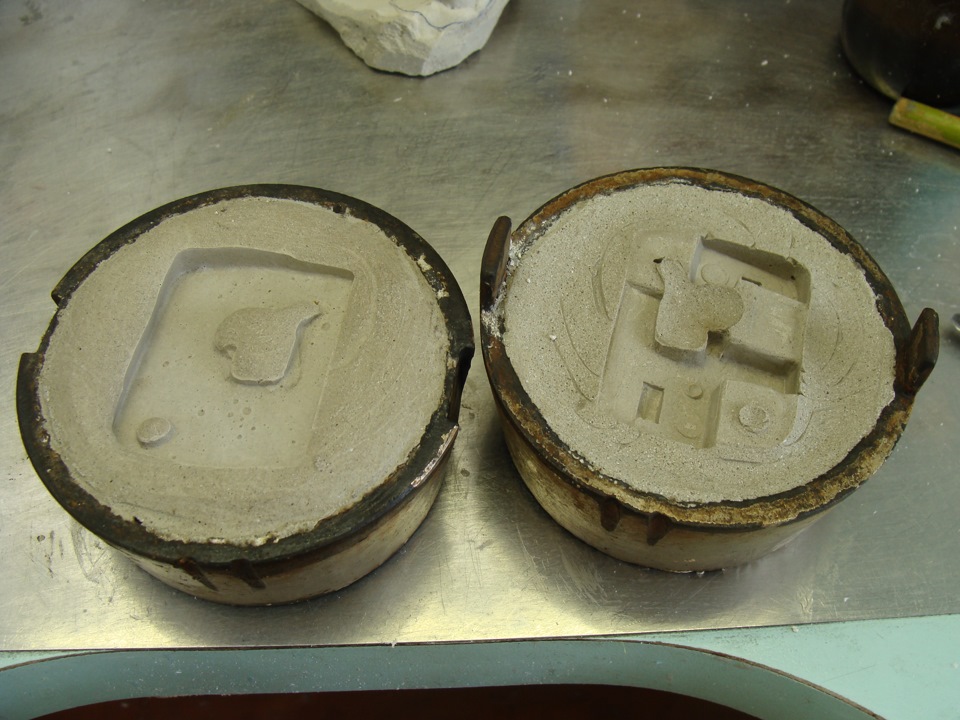
7. We apply three layers of isolac. In this case, Isosol.
In addition to isosol, there are also domestic developments: isolak and isokol. But they are more capricious in work.
How to apply:
Option 1: pour a little on the gypsum and spread over the entire surface with a soft brush (does not work with isolac and isocol - if the gypsum is poorly washed, it starts to roll and clog the brush, well, pellets on the surface).
Option 2: pour a lot, distribute and let the excess drain.
Attention! You need to apply to the entire plaster surface, and not just in the place where the part will be.
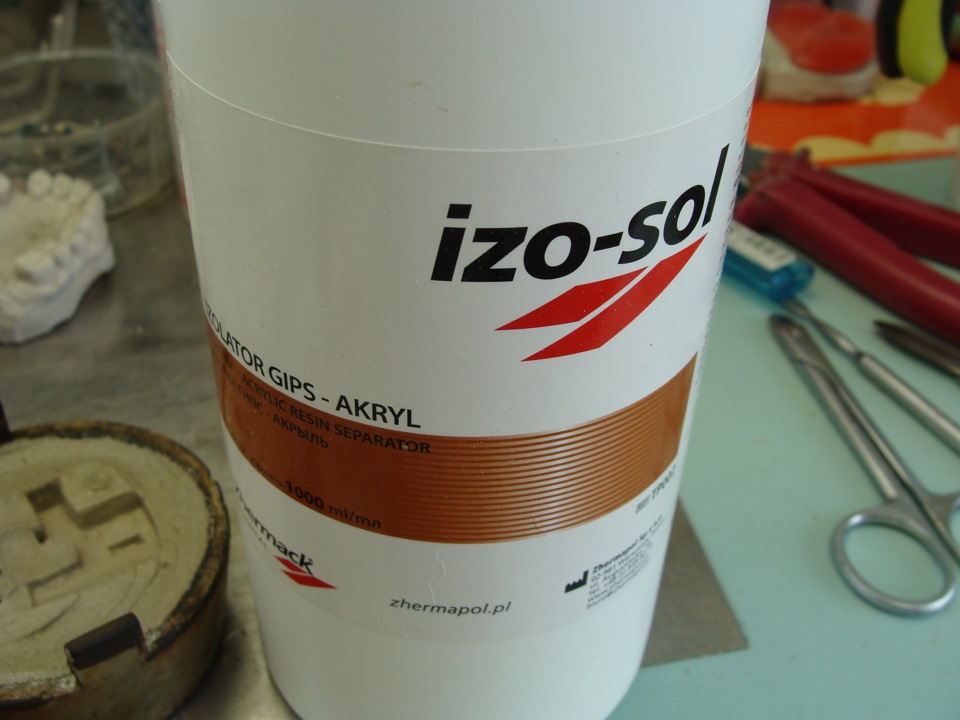
I waited for everything to dry and cool.
Insulation is required. Isolac forms a thin film on the surface of the gypsum, which prevents the introduction of plastic into the gypsum. If the insulation is not applied, then it will be very difficult to separate the plaster from the plastic. You will have to cut the plaster into pieces.
8. In glassware kneading acrylic plastic. In this case, colorless. It is used for the manufacture of prostheses, if a person is allergic to pink dyes. Close the lid until ripe (so that the monomer does not evaporate).
Plastics must be kneaded more than the volume of the part, so that pressure is created inside and the excess is squeezed out. If there is less plastic, then either the part will be defective (there will not be enough parts), or if there is no pressure, everything is porous.
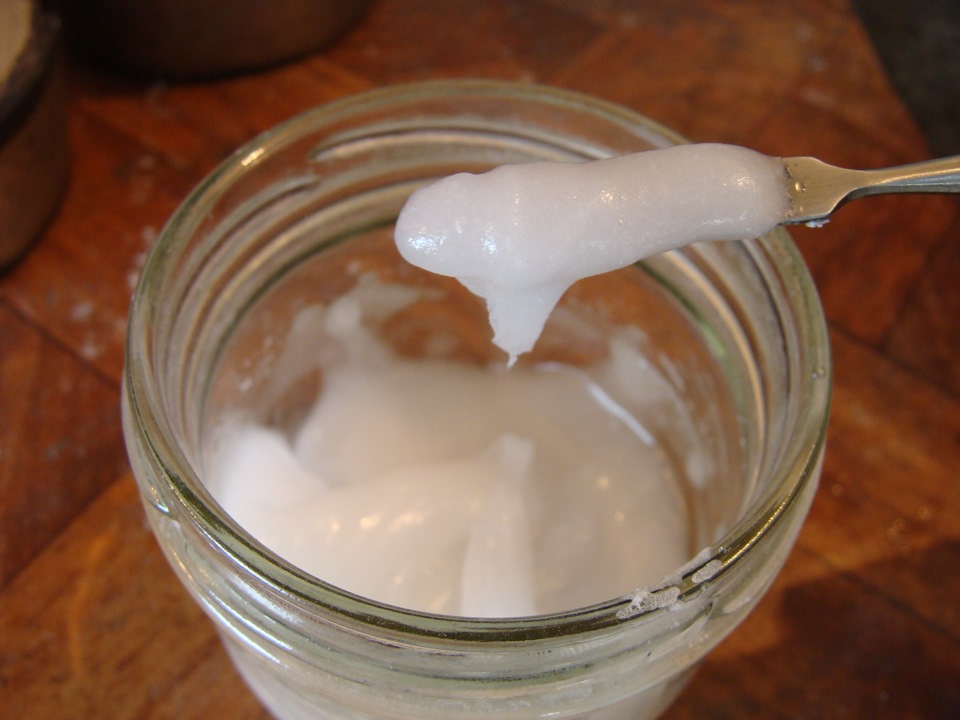
According to the instructions, it is supposed to take a certain amount of monomer and pour powder into it. In practice, technicians do not use scales, measuring by eye, as a result, all the monomer ends before the powder, which indicates incorrect proportions.
It is easier for beginners to take the powder and slowly add the monomer.
As soon as all the powder is wetted with monomer and begins to settle and spread, the desired proportion is reached.
Ripening stages:
1) "Wet sand" - immediately after kneading, it is well felt by hands when stirring with a spatula.
2) The stage of "stretching threads" the powder granules have already dissolved on the outside, but not yet on the inside.
3) "Doughy" - a distinctive feature - does not stick to wet hands. According to the instructions, it is at this moment that it is necessary to pack the plastic.
4) "Rubber-like" - the plastic is overripe, almost unsuitable for work. If in this state it is put into a mold, then when compressed under pressure, huge pressures will arise inside, which will cause deformation of the plaster mold.
The rate of ripening depends on the temperature, in the heat - faster.
I usually pack the plastic in the third stage or at the end of the second - this way small elements are better filled.
9. Putting the plastic into the mold
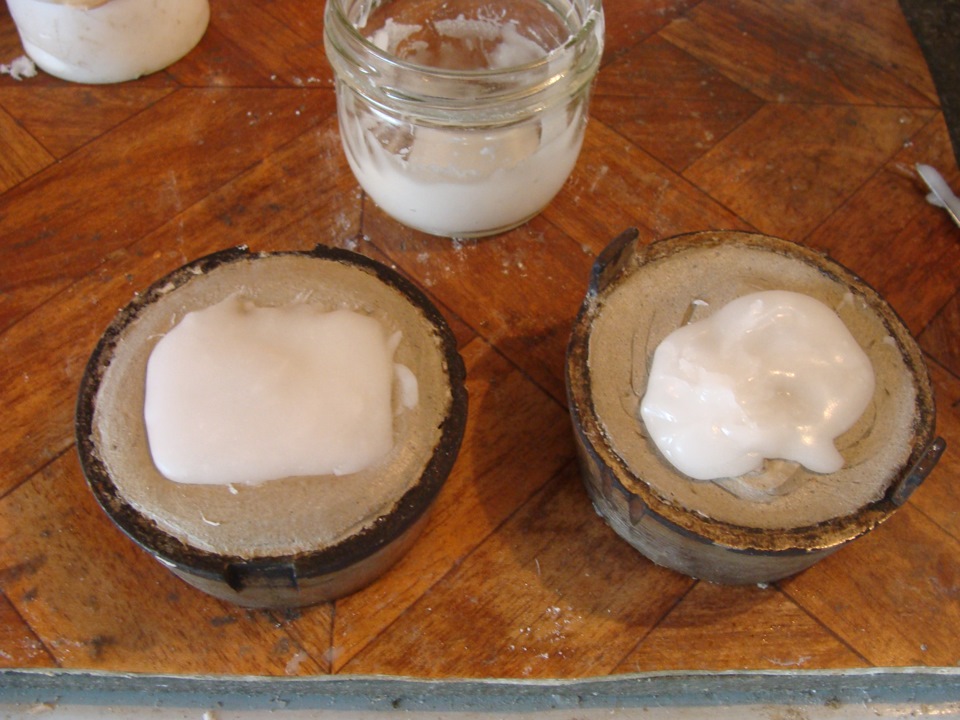
10. We fold the halves of the cuvette and put it under the press. Excess plastic is squeezed out over the edge.
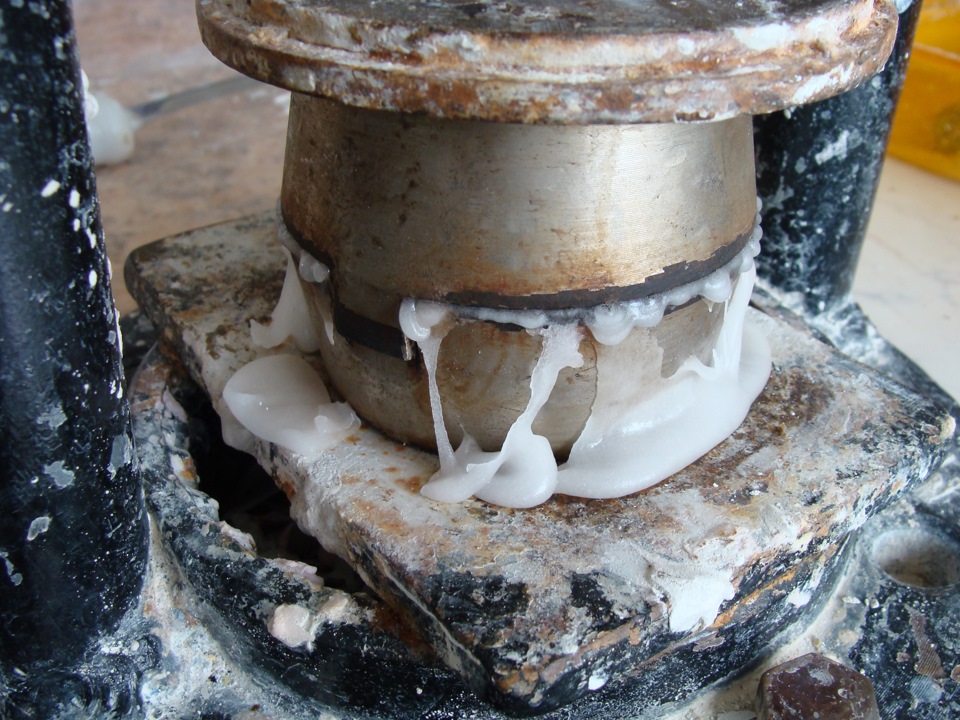
Instead of a press, you can use a car jack)
11. After 10-20 minutes, we take it out of the press, tighten it into a clamp and put it in a pot of water.
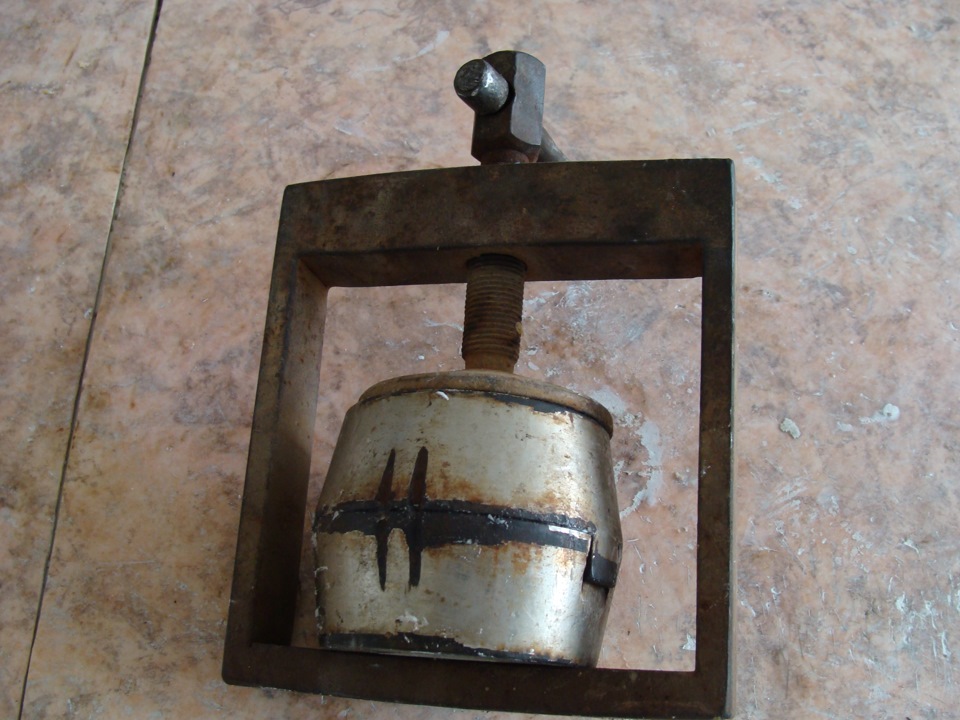
The saucepan is on the stovetop. Turn on the stove like this. so that the water reaches a boil for the floor hour - hour. After boiling, cook for another half hour.
Take out and leave in the air to cool.
If the water boils too quickly, there will be a lot of bubbles in the finished product.
12. Put in water for final cooling. Carefully open the cuvette.
Business idea for organizing small-scale production of products from various molding materials at home. Thanks to innovative technologies today, in the manufacture of plastic products, you can do without expensive injection molding machines. Moreover, you can set up small-scale mini-production right on your desktop. This business idea can be considered in two directions:
- As the main business for the manufacture of finished products and molds by casting from: liquid:
- plastic;
- silicone;
- polyurethane;
- transparent resins and other materials.
- Mold making as an effective addition to other types of business in the area:
- construction;
- Food Industry;
- soap making.
In the first and second cases, casting at home does not require large financial investments. You can start an injection molding business just now.
Manufacturing with Liquid Plastics
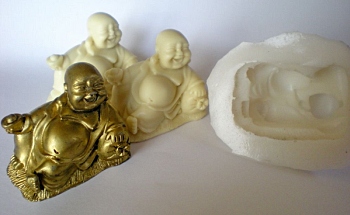 The manufacturing process is carried out using liquid plastics and silicone molds. Now it is possible to produce plastic products in small batches at home:
The manufacturing process is carried out using liquid plastics and silicone molds. Now it is possible to produce plastic products in small batches at home:
- souvenir products;
- toys;
- bijouterie;
- spare parts for autotuning;
- spare parts for various mechanical devices;
- shoes;
- dishes.
There are components for the manufacture of parts from thin-walled plastic, which can significantly expand the range of products and produce parts of any complexity. For example, mixing two components of the Axson FASTCAST F32 brand from a French manufacturer makes it possible to obtain a super-liquid plastic that flows into the smallest folds of the relief of the model's shape. In addition, it is harmless to children and has no smell.
Preparation for production
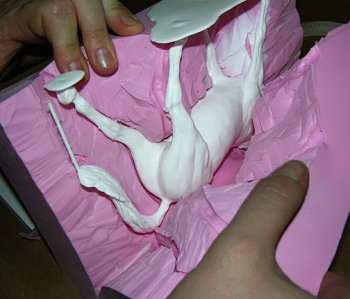 To organize production, first of all, a sample model is required. According to it, you first need to make a mold from special silicone or polyurethane components. With experience and the quality of materials, you can learn how to remove molds from models at such a high level that you can even see fingerprints on products (if necessary). That is, a copy will turn out at the level of identity, which cannot be distinguished with the naked eye. Plastic products can be given complex compounds with any relief. If there is no ready-made model for a sample, but you need to make unique products, you can order it from the owners of a 3D printer. By the way, injection molding significantly exceeds the productivity of 3D printing from plastic.
To organize production, first of all, a sample model is required. According to it, you first need to make a mold from special silicone or polyurethane components. With experience and the quality of materials, you can learn how to remove molds from models at such a high level that you can even see fingerprints on products (if necessary). That is, a copy will turn out at the level of identity, which cannot be distinguished with the naked eye. Plastic products can be given complex compounds with any relief. If there is no ready-made model for a sample, but you need to make unique products, you can order it from the owners of a 3D printer. By the way, injection molding significantly exceeds the productivity of 3D printing from plastic.

When your product is ready, you can decorate it with the help of related products that are attached to liquid plastics:
- paints for artistic effects;
- primers;
- glue.
Naturally, in some cases, creativity is indispensable, and you will have to manually paint the products, which may affect performance. But the creation of each business is undoubtedly a creative process. After all, financial management is an art.
We make a product from liquid plastic
 Technology for creating an ideal small relief in the manufacture of a silicone mold with your own hands. First you need to prepare all the components and materials. We will need:
Technology for creating an ideal small relief in the manufacture of a silicone mold with your own hands. First you need to prepare all the components and materials. We will need:
- Silicon Platinum.
- Liquid plastic Axson FASTCAST F18 (white color, has the consistency of water, odorless!).
- Dye for scarlet silicone.
- Polyurethane varnish.
- Scales.
- Syringe.
- File-buff.
We securely fix the model-sample at the bottom of the formwork to form the form, using neutral wax clay (to avoid silicone leakage). We paint the silicone, from which the finished form will turn out in scarlet color, so that the quality of mixing the components of the liquid, white to the color of the plastic can be clearly seen on the form. Useful advice: in order for the shape to be perfect, the sample model should first be smeared with silicone using a wide brush. In this way, carefully fill in all the recesses of the relief of the compound. Only after that, fill the form completely. We fill the entire formwork with silicone. We leave to fix the structure of the form for 7-8 hours. The hardest part is over.
Congratulations!!! Now you have a ready-made form for the repeated production of copies of the sample model. Make sure the mold is completely dry before casting to avoid bubbles. Then we very carefully mix the plastic components 1: 1 by weight (for this it is better to use a pharmacy or laboratory electronic scale). The setting time is 7 minutes, but it will take another 20 minutes to fully consolidate. This plastic is neutral to silicone and does not stick to it. But after repeated use of the compound over time, you may need a lubricant release agent with the protective properties of EaseRelease. After the required time has elapsed, we take out the finished product, which is copied exactly according to the model.
Polyurethane molds for construction
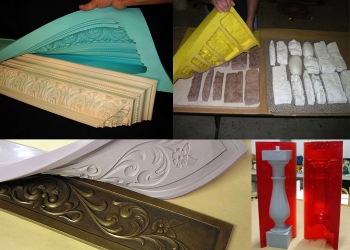 Together with plastic products casting molds can be produced. The use of injection molds in construction is now very popular. It is possible to produce compounds for the production of building materials. They are durable and do not require treatment with special separating lubricants during manufacture. After all, concrete is absolutely neutral to polyurethane. For example, liquid polyurethane compounds allow you to make molds for pouring:
Together with plastic products casting molds can be produced. The use of injection molds in construction is now very popular. It is possible to produce compounds for the production of building materials. They are durable and do not require treatment with special separating lubricants during manufacture. After all, concrete is absolutely neutral to polyurethane. For example, liquid polyurethane compounds allow you to make molds for pouring:
- concrete decorative items(tiles, fences, etc.);
- plaster elements of interior decoration (balusters, moldings, etc.);
- liquid plastic when creating a variety of products (souvenirs, toys, figurines, etc.).
Silicone molds for confectioner and soap making
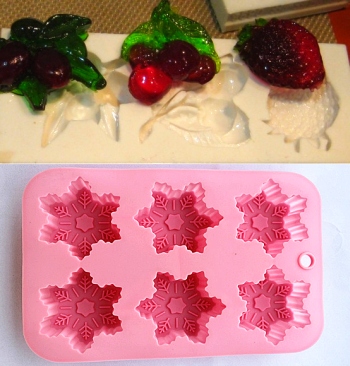 The use of mold casting technology in the food industry is quite obvious. New innovative solutions in the field of chemistry, today they offer liquid: plastics, silicones, silicone masses that comply with all health standards and have the appropriate certificates. Such safe components can be used to produce molds for the food industry. For example, for production:
The use of mold casting technology in the food industry is quite obvious. New innovative solutions in the field of chemistry, today they offer liquid: plastics, silicones, silicone masses that comply with all health standards and have the appropriate certificates. Such safe components can be used to produce molds for the food industry. For example, for production:
- chocolate
- caramel;
- isomalt;
- ice;
- mastics.
Compounds are also in great demand among soap makers. They always need new original forms, to create salable souvenirs made from soap. It is not at all difficult to find a customer who wants to make their products with a unique shape.
small business idea opportunities
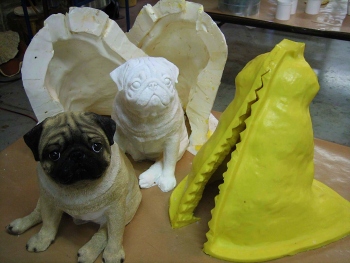 This business idea makes it easy to create popular products with your own hands. Finished works can be sold through the online store. It is also possible to provide services or sell finished compounds to other manufacturers in other industries. Most importantly, with all these wide range of home business opportunities, the cost of the components is more than affordable. The range of components is wide and allows you to choose necessary materials to create shapes or fill them. All that is required is a sample model from which the form will be removed. Such a business idea is quite attractive for a home based business. It does not require a lot of costs, allows you to produce useful goods and captivates the creative process of production.
This business idea makes it easy to create popular products with your own hands. Finished works can be sold through the online store. It is also possible to provide services or sell finished compounds to other manufacturers in other industries. Most importantly, with all these wide range of home business opportunities, the cost of the components is more than affordable. The range of components is wide and allows you to choose necessary materials to create shapes or fill them. All that is required is a sample model from which the form will be removed. Such a business idea is quite attractive for a home based business. It does not require a lot of costs, allows you to produce useful goods and captivates the creative process of production.
A beginner "caster" should not do this, since each type of plastic has only its inherent properties, so it would have to be melted at different temperature. In addition, in production, parts are usually cast in special installations, where high pressure.
Even if you manage to pick up pieces of plastic of the same kind and crush them, melting will result in bubbles. So it's best to go to a hardware store and buy liquid plastic, from which the parts are no less durable than factory ones. Can replace plastic epoxy resin. You will also need:
- silicone;
- large capacity;
- lithol.
If you still decide to make something out of plastic scrap, do not do it indoors. Plastic fumes are toxic.
Making a shape
To cast several plastic parts at home, you will need a master model. You can make it from anything. Suitable for you:- plasticine;
- gypsum;
- wood;
- paper and many other materials.
Make a model of the part to be cast. Lubricate it with lithol or other lubricant. After that, make a shape. Silicone molds are becoming more and more popular. This is understandable, it is easy and convenient to work with this material, but several circumstances must be taken into account. Firstly, there are two types of silicone, pouring and coating. Secondly, each species has its own elongation coefficient and its own viscosity. As for the first parameter, silicone with a coefficient of 200% is suitable for plastic injection.
Pay attention to the viscosity coefficient. The smaller it is, the more accurate the shape will be. This is especially important if you are going to work with potting silicone. Consider also the polymerization time. If you have casting silicone, place the master model in a flask (it can be made of steel or, for example, bronze) and fill with silicone. Gently apply the coating material with a brush, taking into account all the irregularities. Let the silicone harden and then remove the master model.
The flask is a metal container. It should be slightly larger than the master model.
Pour detail
The casting process largely depends on what exactly you are making the part from. Polyester resins and liquid plastics are good because you don't have to melt anything, but they differ in viscosity and pot life. These parameters are indicated in the specifications. Treat the mold with lubricant and fill it with liquid plastic as directed in the instructions. Let the plastic harden, then remove the product from the mold.Many small parts are made of plastic. To take a piss necessary details, you will need special forms. They can be collapsible and one-piece. Let's talk about the intricacies of using both.
Instruction
If you are making a symmetrical part with a simple configuration, then use a collapsible mold consisting of two halves. When forming plastic casting models, simply press them into the uncooked plaster up to the plane of symmetry and let it harden. Moisten the front part of the second half of the mold with a weak soapy water, this will make the process of splitting the halves easier. At the top of the form do through hole 3-4 mm in diameter. After you have taken the model out of the mold, fold both halves and fasten them together with twine or rubber.
You can also use the one-piece form. Such forms are made of paraffin, then poured with a solution of gypsum, in the upper part there should be a hole with a diameter of 3-5 mm (sprue). After the mold has hardened, place it in cold water sprue side up and boil until the casting pattern is melted. Water displaces the paraffin from the mold and it floats to the surface. Then cool the water and remove a layer of paraffin from its surface. Repeat heating to remove paraffin residue from the mold. As a result, you get a cavity in the plaster that has the shape of the desired part.
If you need fasteners inside the future part, then insert them into the paraffin casting model, this will prevent it from moving during melting. For example, if a metal nut is required in a part, put it with a protruding bolt and fill everything with gypsum, after melting the paraffin, the gypsum will hold the nut in position. With this type of shape, cook the plastic in a glass dish, giving it the consistency of liquid sour cream.
Preparing plastics. Take the acrylate powder AKP-7, previously mixed with a solvent to the state of the test. Pour the mass into the mold, after moistening it. Hold the filled mold at room temperature for 15-30 minutes, and then seal it through the sprue hole with a wooden or glass rod.
The compacted mass must retreat from top edge forms by 3-5 mm. Close the sprue hole with moistened cellophane and plywood trim, then tighten with a clamp. Immerse all this in water at room temperature and bring to a boil, boiling should not be violent and last about 45 minutes. Then stop heating and hold the mold in water for 15-20 minutes.
Related videos
In the manufacture of various products from gypsum do not need a form for casting. The quality and durability of the gypsum product largely depends on the quality of the form. Modern technologies allow simple flexible form for casting materials such as silicone and polyurethane. Such a form may well be made even in a home workshop.
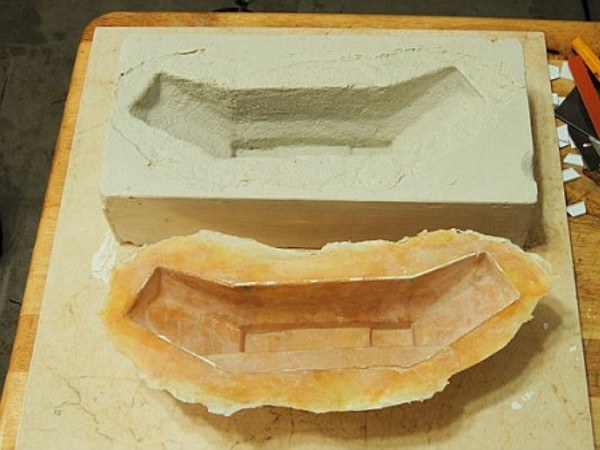
You will need
- - fiberglass;
- - chipboard;
- - wooden boards;
- - sculptural clay;
- - silicone or polyurethane;
- - glue.
Instruction
Prepare a container for pouring. Use any sufficiently rigid material for this, for example, fiberglass, chipboard, wooden boards and even elements of the Lego children's designer. Sometimes it is possible to pick up and ready form or box right size. If necessary, clean the parts of the future container from dust and possible contaminants.
Connect the shell parts with any glue. The task is to ensure that the container does not have gaps and is firmly held as a whole. It is most convenient to connect the parts of the shell with the help of an adhesive melt filled into a special gun.
Take non-hardening sculpting clay and lay it evenly up to half of the container. Ordinary children's plasticine is too sticky, so it is not recommended to use it. Make sure the surface of the plasticine is smooth and free of crevices.
Place the product model in the prepared plasticine. Using a pencil, make locks in the form of holes. They are necessary so that during the manufacture of the casting in the future, parts of the mold do not move.
The company "Izpenoplasta" is a leader in the production of foam products in Russia, some CIS countries and Europe. The company's specialists turn this multifunctional material into light and durable facade, architectural, and decorative solutions.
Product Benefits
This material is used for decorative, advertising, design purposes. Soundproof panels are made from it for decorating the facades of houses, three-dimensional figures, and advertising signs.
Expanded polystyrene is widely used due to the following properties:
- High strength and resistance to external influences
- Fade and mildew resistant
- Lightness, mobility - even the most voluminous figures can be easily transferred
- Easy to install - such products are fixed with a special glue
- Environmental friendliness, fire safety
- More than affordable price.
Our company has many years of experience in working with expanded polystyrene. From this material we produce products of varying complexity, we also manufacture products for individual orders.
Our main areas of activity:
- Styrofoam cutting
- Decoration of holidays and other events
- Advertising design
- Facade decor
The company's specialists create three-dimensional figures, letters, signboards, illuminated letters, fireplaces, balls, dummies, sculptures. In addition, we produce figures and products made of plastic, fiberglass.
Professional employees of the company use only high quality raw materials and environmentally clean materials. Contact us and get the best products from polystyrene foam.
Favorable prices and high quality products
The company "Izpenoplasta" is a great opportunity to get high-quality and durable products at affordable prices. Thanks to years of experience work, we create real masterpieces of the highest quality.
Why should you trust us?
- We use proven and environmentally friendly raw materials that will not harm even when installing products indoors.
- The company employs only professionals, examples of whose work can be seen on our website.
- We respond promptly. Contact our managers and they will short terms will answer every request. Competent consultants will explain the advantages of foam plastic products and help you quickly place an order.
- We will deliver the products and install them.
Order stands, signs, foam plastic statues, design the creation of original decors. Due to the ease of maintenance and processing of this material, all such products are quite cheap. At the same time, they remain one of the most durable and strong, do not deteriorate and do not lose their appearance.
We offer our clients finished products or creation original decor according to unique sketches. Our prices are more than affordable!
We carry out delivery of production in Moscow and the Moscow region in the stipulated terms. All conditions for placing orders and terms of delivery of products can be obtained from managers.
